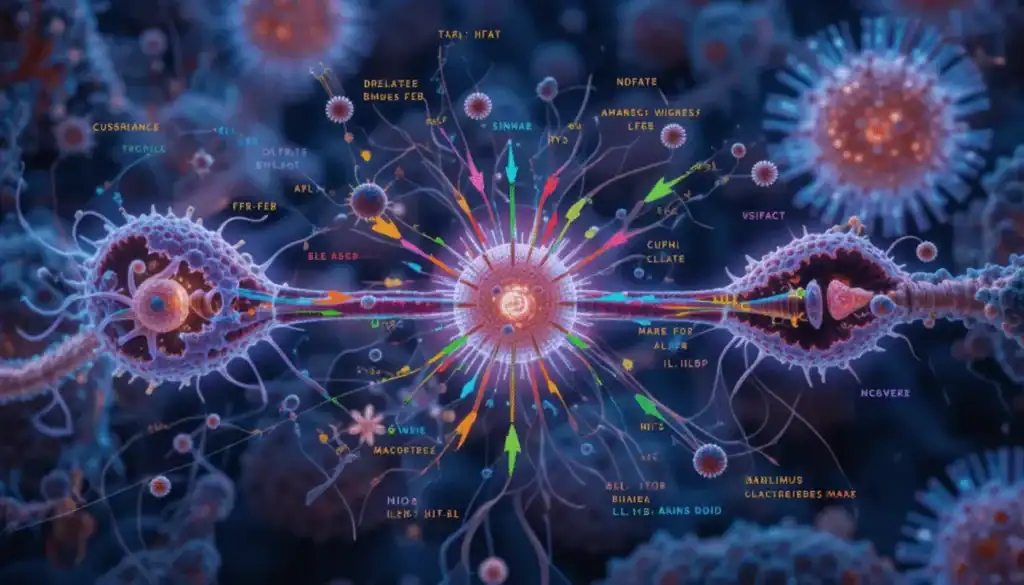In modern medicine, immunosuppressants have revolutionized treatment strategies — from organ transplantation to autoimmune diseases. Among these, glucocorticoids stand tall as a double-edged sword: life-saving in one dose, life-altering in the long run.
This post explores how these drugs work, why they are prescribed, and the risks you must not ignore.
⚙️ How Glucocorticoids Suppress Immunity
Glucocorticoids work deep inside the cell nucleus — affecting gene transcription and inflammatory signaling at a molecular level. Their most crucial action is the inhibition of NF-κB (Nuclear Factor kappa-light-chain-enhancer of activated B cells), a master switch for inflammation.
🧠 Quick Recap of the Inflammatory Pathway:
- Toll-like receptors (TLRs) get activated on macrophages
- → Activation of Calcineurin
- → Dephosphorylation of NFAT → nuclear activation
- → Activation of NF-κB
- → Transcription of inflammatory cytokines, especially IL-2
🛑 Glucocorticoids block NF-κB, halting this cascade early and effectively.
🔪 Multi-Point Inhibition: Glucocorticoid Superpowers
Beyond NF-κB, glucocorticoids block multiple layers of the immune system:
| Action | Effect |
|---|---|
| 🚫 Inhibits Phospholipase A2 | ↓ Prostaglandins & leukotrienes → anti-inflammatory |
| 🧱 ↓ Capillary Permeability | Less fluid escape = ↓ swelling |
| 🧬 Stabilizes Lysosomal Membranes | ↓ Enzyme release from immune cells |
| ❌ ↓ Leukocyte Migration | Cells can’t reach the inflamed site |
| 🦠 ↑ Neutrophils in blood | But ↓ ability to fight infections |
| 🔕 ↓ Adhesion Molecules (e.g., ICAM) | Neutrophils “detach” and float in blood |
This makes them potent but also risky.
🚨 The Side Effect Spectrum
Despite their life-saving utility, long-term glucocorticoid use comes with an extensive list of well-documented side effects. Use the mnemonic:
“GLUCOCORTICOIDS IN WONDERLAND”
| Mnemonic | Side Effect | Explanation |
|---|---|---|
| GLU | Glaucoma | ↓ Prostaglandin → ↑ IOP |
| GLU | Hyperglycemia | ↑ Insulin resistance |
| OOO | Osteoporosis | ↓ Osteoblasts, ↑ Osteoclasts |
| CORT | Cataracts | Posterior subcapsular |
| IN | Infections | Immunosuppression |
| WONDERLAND | Wound healing ↓ | ↓ Collagen & fibroblast function |
| ER | Edema, HTN | Na⁺/water retention via mineralocorticoid effect |
These effects are particularly dangerous in chronic use (e.g. in lupus, asthma, rheumatoid arthritis).
🧪 Azathioprine & Mycophenolate: Targeting DNA Synthesis
Two other key immunosuppressants—Azathioprine and Mycophenolate Mofetil—target purine nucleotide synthesis, inhibiting DNA replication in immune cells.
🧬 Mechanism:
- Azathioprine → converted to 6-Mercaptopurine → inhibits PRPP amidotransferase
- Mycophenolate → inhibits IMP dehydrogenase
🧬 Both halt de novo purine synthesis, impairing rapidly dividing immune cells.
☢️ Side Effects:
- Pancytopenia (↓ RBCs, WBCs, platelets)
- GI Upset
- Mycophenolate → ↑ risk of CMV infection
- Azathioprine → interacts with Allopurinol (via xanthine oxidase inhibition)
💊 Quick Comparison Table
| Drug | Target | Unique Features | Major Toxicities |
|---|---|---|---|
| Glucocorticoids | NF-κB, PLA2 | Broad anti-inflammatory | Cushingoid signs, infections, hyperglycemia |
| Cyclosporine | Calcineurin | Binds Cyclophilin | Nephrotoxicity, hirsutism |
| Tacrolimus | Calcineurin | Binds FKBP | Neurotoxicity, diabetes |
| Sirolimus | mTOR | Blocks IL-2 response | Pancytopenia, hyperlipidemia |
| Basiliximab | IL-2R (CD25) | Monoclonal antibody | Edema, HTN |
| Azathioprine | PRPP amidotransferase | TPMT-dependent | Pancytopenia, hepatotoxicity |
| Mycophenolate | IMPDH | Inhibits GMP production | CMV infection, diarrhea |
🧠 Clinical Relevance
Whether you’re treating autoimmune conditions, preventing organ rejection, or managing inflammatory flares — immunosuppressants are indispensable. But with power comes responsibility. Proper monitoring, drug interactions (especially with allopurinol or live vaccines), and dosing schedules are essential to ensure patient safety.



